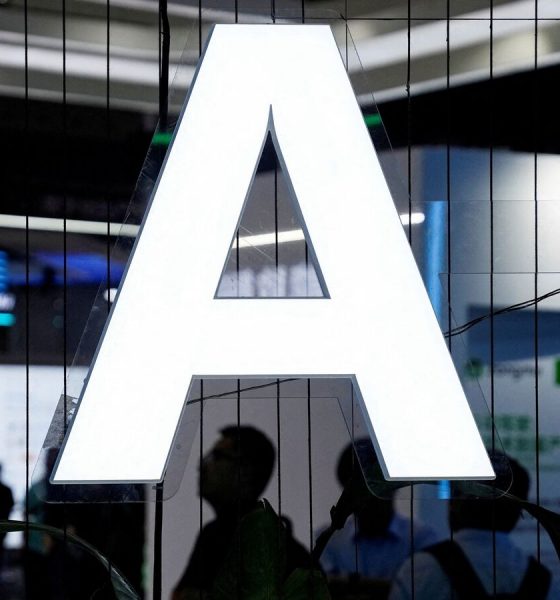
Metaverse
Mint Explainer | Why Big Tech is rushing to build AI data centres across India – Crypto News
Why does AI need dedicated data centres?
AI is by far the biggest data user at the moment, primarily because it consumes and processes vast amounts of information to produce results.
Companies require large, at-scale data centre infrastructure to train large AI models, the largest of which are based on multiple trillions of data parameters. Even more challenging is making such AI models available without limitations and latencies to users worldwide.
The availability of these facilities closer to users makes it easier for applications to load and run. Beyond latencies, localizing a data centre also means that it is less prone to global geopolitical sanctions and disruptions—and with increasing reliance on AI for both businesses and public services, AI data centres are likely to emerge as critical infrastructure in India.
Whose needs would most such facilities serve?
Some of the biggest announcements, such as Microsoft’s $3 billion and Amazon Web Services (AWS)’s $6.8 billion, are designed to help the US-based Big Tech companies run their own applications, services and cloud operations. Google’s new $15-billion AI hub will also do the same.
However, local market infrastructure in AI typically prioritizes its usage in cloud-based AI applications that cater to the local market. For instance, Google’s AI hub in India, once operational, will host and run its Gemini AI platform.
OpenAI, which reportedly plans to set up a 1 gigawatt (GW) data centre in India, will also likely run its ChatGPT platform’s localized services, such as Indic language operations, out of the India facility.
Additional available data centre capacity can then be used to cater to the world, said Anushree Verma, senior director analyst for emerging technologies at research and advisory firm Gartner.
Which Indian states are leading the push?
Public data centre trackers indicate that Maharashtra is the most populous state in the country in terms of data centres, with 61 registered facilities. Tamil Nadu, Telangana and Karnataka are all close competitors, with 29, 25, and 24 data centres in each of the three states, respectively.
Andhra Pradesh, driven by Google’s announcement on Tuesday, is the latest entrant, but it is relatively behind the rest of the pack. Each of these states is offering favourable policies such as land and power subsidies as well as job creation-linked tax breaks and other incentives, to draw more data centres to their borders.
Are these data centres creating jobs?
On paper, each of the three Big Tech firms mentioned above has committed to creating jobs on a large scale. During his visit to India in January, Microsoft’s chairman and chief executive Satya Nadella said the company will upskill 10 million people in India with “essential skills”.
Google’s announcement implied that it would create 180,000 “high-value” jobs in Andhra Pradesh. Amazon, in January, said its investments in cloud and AI data centres would create over 81,000 jobs across Maharashtra and Telangana, where the facilities are being set up.
These jobs are emerging at a time when India’s $300 billion information technology (IT) services industry is experiencing a slowdown, resulting in a corresponding decline in hiring. The sector typically hires hundreds of thousands of people each year and is also critical to upskilling and training early-career engineers.
The data centres in question may somewhat offset the slowdown in IT hiring, industry stakeholders said. Moreover, jobs linked to data centres, cloud and AI services in India are likely to increase the median value of early-career jobs that engineering graduates pursue, thereby potentially benefiting India’s young workforce.
What’s the impact on local data centre providers and companies?
S. Krishnan, secretary at the IT ministry, said setting up hyperscalers and global data centres is a largely positive move for India’s industries. For one, startups working in the country on AI applications and services get access to the full stack of a Big Tech firm’s AI offerings as well as the latest data centre infrastructure in line with global standards.
For local data centre providers, increased competition also leads to a rising valuation of the overall data centre industry, which in turn can be beneficial in raising more capital to expand their own infrastructure and compete with Big Tech.
However, while Big Tech’s infrastructure largely caters to itself, existing local data centre providers, such as Yotta, Equinix, Princeton, NTT, and others, will cater to third-party clients and consumers, including Big Tech itself.
But what about power consumption and emissions?
States are offering policies that are helping data centre operators localize energy operations and emission management. For instance, earlier in October, the Maharashtra government announced that it would offer data centres with captive power generation and distribution licences in order to be able to cater to their own power needs.
The licences are largely centred on data centres generating their own green energy through renewable sources.
Uttar Pradesh, too, in its data centre policy published four years ago, prioritized self-generation of renewable power to run data centre operations in the state. Most service providers either purchase carbon credits to offset emissions generated due to the running of servers and cooling requirements or use renewable energy.
-

 Blockchain1 week ago
Blockchain1 week agoIt’s About Trust as NYSE Owner, Polymarket Bet on Tokenization – Crypto News
-

 De-fi1 week ago
De-fi1 week agoGrayscale Launches Staking for Ethereum and Solana Spot Crypto ETPs – Crypto News
-

 Technology1 week ago
Technology1 week agoDiwali bonanza: iPhone 16 Pro Max price crashes by up to ₹55,000 on Flipkart – Don’t miss out! – Crypto News
-
![CSX Corp. (CSX) Stocks Elliott Wave technical analysis [Video]](https://dripp.zone/news/wp-content/uploads/2025/02/CSX-Corp-CSX-Stocks-Elliott-Wave-technical-analysis-Video-400x240.png)
![CSX Corp. (CSX) Stocks Elliott Wave technical analysis [Video]](https://dripp.zone/news/wp-content/uploads/2025/02/CSX-Corp-CSX-Stocks-Elliott-Wave-technical-analysis-Video-80x80.png) others6 days ago
others6 days agoDow Jones slides to one-week low as government shutdown persists – Crypto News
-

 others1 week ago
others1 week agoEUR/USD holds modest bid amid US shutdown and mixed PMI readings – Crypto News
-
![CSX Corp. (CSX) Stocks Elliott Wave technical analysis [Video]](https://dripp.zone/news/wp-content/uploads/2025/02/CSX-Corp-CSX-Stocks-Elliott-Wave-technical-analysis-Video-400x240.png)
![CSX Corp. (CSX) Stocks Elliott Wave technical analysis [Video]](https://dripp.zone/news/wp-content/uploads/2025/02/CSX-Corp-CSX-Stocks-Elliott-Wave-technical-analysis-Video-80x80.png) others6 days ago
others6 days agoDow Jones slides to one-week low as government shutdown persists – Crypto News
-

 De-fi1 week ago
De-fi1 week agoExposure Down, Risk Up – “The Defiant” – Crypto News
-

 Metaverse1 week ago
Metaverse1 week agoIs AI really stealing your job? New Yale study fact-checks claims and finds out the culprits – Crypto News
-

 Metaverse4 days ago
Metaverse4 days agoWhat Satya Nadella’s latest shakeup says about Microsoft’s evolving AI strategy – Crypto News
-

 Metaverse4 days ago
Metaverse4 days agoWhat Satya Nadella’s latest shakeup says about Microsoft’s evolving AI strategy – Crypto News
-

 Technology4 days ago
Technology4 days agoAI isn’t the dot-com bubble, but that won’t stop it from ending badly – Crypto News
-

 Blockchain1 week ago
Blockchain1 week agoDeFiLlama Delisting Aster Perpetual Futures Volume Data – Crypto News
-

 Metaverse1 week ago
Metaverse1 week agoHow AI search is disrupting SEO, e-commerce and journalism – Crypto News
-

 Cryptocurrency1 week ago
Cryptocurrency1 week agoEthereum can rally to $5,900 in October – but ONLY IF… – Crypto News
-
Business1 week ago
Whale Dumps Massive $55 Million in XRP to Ripple as Coin Falls Below $3? – Crypto News
-

 Blockchain1 week ago
Blockchain1 week agoOndo Secures SEC-Registered Infrastructure With Oasis Pro Acquisition – Crypto News
-
Technology1 week ago
Gold Vs Bitcoin – Peter Schiff Predicts BTC Will Be ‘Rugged by Gold’ – Crypto News
-

 Blockchain1 week ago
Blockchain1 week agoBNY Explores Blockchain Payments Using Tokenized Deposits – Crypto News
-

 Blockchain7 days ago
Blockchain7 days agoCoinbase Premium Gap Signals Strongest Bitcoin Accumulation Since ETF Launch – Details – Crypto News
-

 Blockchain6 days ago
Blockchain6 days agoEurope’s Digital Asset Rules Have A Transferability Blind Spot – Crypto News
-

 Technology4 days ago
Technology4 days agoChatGPT will soon pay for you! India’s AI payment pilot set to go live: What it means for users – Crypto News
-

 Technology1 week ago
Technology1 week agoDiscord user data leaked after breach at customer service partner: Here’s what was exposed – Crypto News
-

 others1 week ago
others1 week agoGBP/USD rises as US shutdown prolongs, Fed data gap grows – Crypto News
-
Technology1 week ago
ASTER Token Rockets Over 10% in an Hour as Binance Announces Spot Listing – Crypto News
-

 Technology1 week ago
Technology1 week agoOxygenOS 16 to launch in India on October 16: List of OnePlus devices likely to get the update – Crypto News
-
Technology1 week ago
Fed’s Schmid Signals Opposition to Further Rate Cuts With Inflation ‘Too High’ – Crypto News
-

 Technology1 week ago
Technology1 week agoThe AI Suicide Problem Knows No Borders – Crypto News
-

 De-fi1 week ago
De-fi1 week agoGLXY Jumps 8% as Galaxy Digital Launches Retail Platform – Crypto News
-

 Blockchain1 week ago
Blockchain1 week agoIs A $10,000 Ethereum Price Within Reach? Here’s What Experts Are Forecasting Next – Crypto News
-

 Technology1 week ago
Technology1 week agoOnePlus 15T tipped to launch in early 2026 with Snapdragon 8 Elite Gen 5 chipset: Report – Crypto News
-
Business7 days ago
5 Reasons Why ZA Miner is the Leading Blockchain Mining Platform on the Market? – Crypto News
-

 Technology6 days ago
Technology6 days agoMeta AI on Instagram can now dub your reels in Hindi: here’s how the feature works – Crypto News
-
Business6 days ago
Senate Democrats’ New DeFi Regulation Proposal Stalls Crypto Market Structure Talks – Crypto News
-

 Cryptocurrency1 week ago
Cryptocurrency1 week ago150% Surge on Trump Media Partnership – Crypto News
-
Business1 week ago
Aster Token Crashes 10% On DEX Integrity Issues Ahead of Airdrop, What’s Happening? – Crypto News
-

 Blockchain1 week ago
Blockchain1 week agoSolana (SOL) Spikes Higher – Bulls Tighten Grip As Market Heats Up Again – Crypto News
-
others1 week ago
Kalshi Founder Reveals the Most Profitable Vertical for Prediction Markets – Crypto News
-

 Blockchain1 week ago
Blockchain1 week agoAI Bitcoin Price Model Says BTC Will Stay Rangebound in October – Crypto News
-

 others1 week ago
others1 week agoWatching the 150 line in the sand – OCBC – Crypto News
-

 Technology1 week ago
Technology1 week agoOnePlus confirms Android 16-powered OxygenOS 16 to launch in India on 16 October, teases new AI features – Crypto News
-

 Cryptocurrency1 week ago
Cryptocurrency1 week agoCardano (ADA) eyes $0.89 breakout as Bitcoin steals the spotlight – Crypto News
-
Technology1 week ago
Ethereum’s Price Bullish Cycle Resumes as Grayscale Launches Spot Staking ETPs – Is $7,331 Next? – Crypto News
-

 De-fi1 week ago
De-fi1 week agoBitcoin Surges Above $125,000 as ‘Uptober’ Rally Continues for Sixth Day – Crypto News
-

 Blockchain1 week ago
Blockchain1 week agoPolygon Proposal Seeks to End POL Inflation, Add Buybacks – Crypto News
-

 others1 week ago
others1 week agoFedspeak expected to grab all the attention – Crypto News
-

 Cryptocurrency1 week ago
Cryptocurrency1 week agoIndia to Roll Out RBI-Linked Digital Currency Amid Dismissal of Crypto With ‘No Backing’ – Crypto News
-

 Cryptocurrency1 week ago
Cryptocurrency1 week agoHow to Create A Meme Coin And Make Money Out of It – Crypto News
-

 Technology1 week ago
Technology1 week agoApple silently fixes Apple Intelligence bug that stopped iPhone 17 users from using AI features – Crypto News
-

 De-fi1 week ago
De-fi1 week agoICE Invests $2 Billion in Polymarket To Expand Into Prediction Markets – Crypto News
-

 Technology1 week ago
Technology1 week agoAnthropic CEO Dario Amodei to visit India this week as Claude AI maker plans first office in Bengaluru – Crypto News














